Store cupboard staples to build a healthy meal
The cost of living crisis in the UK doesn’t appear to be letting up anytime soon. So, I thought a blog post about making a healthy meal with cheaper store cupboard ingredients would be useful. I’ve got another blog post here about how to eat healthier on a budget.
I can appreciate this blog post requires you to have enough
money to build up your store cupboard, but it will show that you can make a
nutritious meal without breaking the bank.
What makes a healthy meal?
First let’s get into what makes a healthy meal. For a
healthy meal you need a balance of the 3 macronutrients: fat, protein, and
carbohydrates. A lot of foods are a combination of these nutrients already.
Beans or lentils for example contain carbohydrates and they're also a great
source of plant protein.
Carbohydrates are your brains preferred energy source and they provide energy for your whole body too. Sources of carbohydrates include: bread, rice, pasta, potatoes, and corn. Fruit and vegetables are also carbohydrates, and they provide lots of vitamins and minerals needed to keep your body working.
Carbohydrates, especially wholegrain varieties, contain fibre which
helps to keep your digestion moving and keeps you full for longer.
Fat is needed in your body for cell structure, as a source of energy, for insulation, and for the creation of hormones to name a
few. It’s an important nutrient that can often be demonised due to it being
high in energy (calories). Sources of fat include: oils, butter, nuts, seeds,
and avocado.
Protein is needed for growth and repair of all your body’s
cells and tissues. Proteins also form part of your immune system, your hormones, and
speed up all the biochemical reactions in your body. Proteins take longer to
digest so they keep you full and satisfied. Sources of protein include: meat,
fish, eggs, beans, dairy, and meat alternatives like Quorn.
A balanced plate can look like: ½ the plate full of
vegetables, ¼ of the plate a source of carbohydrates, and a ¼ of the plate
being from protein sources. This is rounded off with a serving of fat. Of course,
not every meal will be perfectly proportioned like this, but if you can aim for
this most of the time, then you’re doing well.
How to build your store cupboard:
You can achieve healthy balanced meals without having to buy
fresh ingredients. There’s nothing wrong with convenience, and don’t let the
fact that food is more processed stop you. Processing doesn’t inherently mean
the food is ‘bad’.
It can be cheaper and time saving to utilise your store
cupboard when it comes to making a meal. Here’s how to cover every food group:
Carbohydrates:
For store cupboard carbs, you can get things like microwave
pouches of rice, grains, or lentils and beans. These can be heated
up in a couple of minutes and make for an easy source of carbohydrates.
Checking the ingredients list for added sugar or salt is a good way to be mindful of
what you’re eating. You can also opt for wholegrain sources like brown rice or
quinoa pouches to maximise the fibre content.
You can also get dried carbohydrates like pasta,
rice, noodles, or cous cous to build up your stores. These last a long time
and can be cheaper if bought in bulk. Again, going for whole grains options
will add more fibre.
Tinned vegetables are another great store option.
Things like sweetcorn, peas, and carrots work well when tinned and can be added
to most recipes for a boost of colour and nutrients. Look out for the vegetables
in water with no salt added so you’re in control of the amount of salt in the
dish.
And I know it’s not a store cupboard, but frozen veg is also a
great option and saves waste as you can use what you need and put the rest back
in the freezer for later.
Another great tin to have are items like tinned chopped
or peeled tomatoes, passata, and tomato puree. These tend to be just tomato
in the ingredients list and can be added into a dish to make a sauce. Nutritious and
practical!
Fat:
Having a good oil to cook with is essential for making a lot of dishes. Olive oil is generally a good all rounder for most meals, but extra virgin olive oil is best used uncooked like in a salad dressing or to drizzle over a finished dish. I’m aware olive oil can be pricy, so an economical substitute could be rapeseed oil.
Another fat source you can be keep in your store cupboard to add to a meal is seeds. These can be mixed seeds or individual bags of seeds. They can add a satisfying crunch and lots of nutrition without changing much in the meal.
One seed I always have in the cupboard is milled linseed and I add
it to yoghurt, porridge, and salads for a boost of nutrition.
Nuts can be used similarly to seeds as a garnish on
top of a meal. You can also use peanut butter to add a savoury nutty taste to
things like curries or a stir fry.
Protein:
Now onto proteins, I’ll start with tinned fish.
I’m sure you’re familiar with tinned fish as these are a common protein source. You can get things like tuna, sardines, mackerel, and salmon all tinned and ready to use for your convenience.
They typically
come in brine, oil, or a tomato sauce. I usually go for the ones in oil and use
the oil to cook my meal. This kills two food groups with one stone! If you’re
being mindful of added salt, I’d suggest the ones in spring water.
You can also get tinned meat like corned beef to keep in the
cupboard. It’s a good source of protein but is high in salt so this isn’t an everyday
food, but something to have occasionally.
Even if you’re not vegetarian or vegan I always recommend
having some plant based proteins in your cupboard. Tinned beans, and lentils
are great nutritious options that are cheap and last long. They can be added to
a meal or be the star on their own. You can add a tin of lentils to a
bolognaise, throw some chickpeas in a curry, or have black beans in your chilli
con carne.
Seasonings:
It’s not a nutrient but flavour is the most important part
of any meal!
Dried herbs and spices are an easy way to make your dish
tasty. They should be kept in a cool
dark place in an airtight container to avoid losing the flavour.
Vinegar is also a good way to add some acidity and sharpness
to a meal, and it doesn’t have to be stored in the fridge. Other ways to add
flavour include: soy sauce, fish sauce, curry paste, harissa paste, or mustard
but these usually have to be refrigerated once opened.
Make it a meal:
Now let’s put it all together and make a balanced meal! You can
make a meal entirely from your store cupboard or you can use majority from the
store cupboard with a few fresh ingredients. I do it all the time when meal
prepping for work.
A few examples here:
- Chickpea curry: tin of chickpeas, tin of coconut milk, curry paste, served with a rice pouch
- Pasta and meatballs: dried pasta, passata, a tin of beans, dried basil, and fresh meatballs
- Plant based power bowl: quinoa pouch, tin of lentils, tin of beans, and tinned sweetcorn
- Fish frenzy: Cous cous, tinned mackerel, tinned corn, and diced bell pepper
- Chili non carne: tin of mixed beans, tin of chopped tomato, served with a rice pouch
- Salmon and/egg fried rice: rice pouch, tinned salmon, tinned carrots, tinned sweetcorn, and eggs
Key points:
- A balanced meal comprises of carbohydrates, protein, and fat.
- You can make a healthy meal from your store cupboard. This can be cheaper and more convenient.
- Store cupboard carbohydrates include: microwave rice pouches or dried pasta. You can also get tinned vegetables in water.
- Olive oil or rapeseed oil are good fat options. You can also use seeds or nuts for healthy fats.
- Store cupboard proteins include tinned fish or tinned beans.
I hope you enjoyed this post!
Bye for now 👋
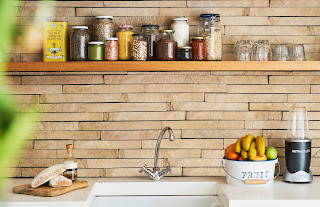
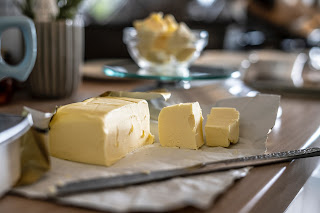
.jpg)
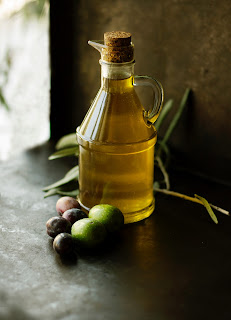
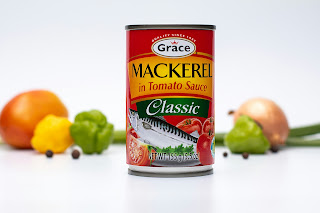
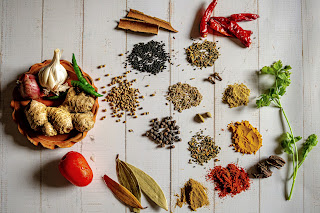

.jpg)

Comments
Post a Comment